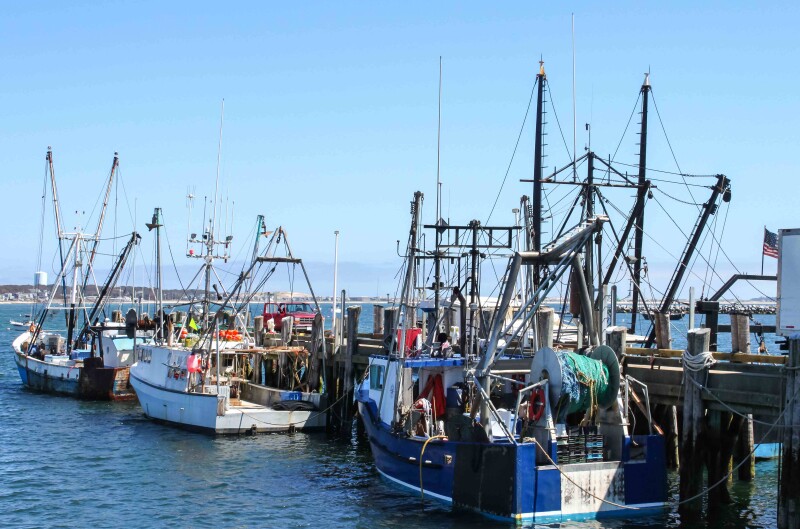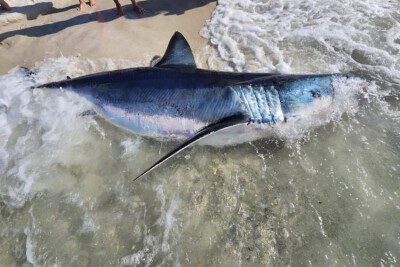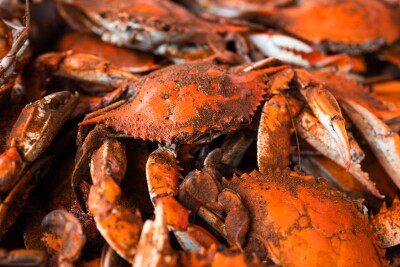A new report from the U.S. Government Accountability Office (GAO) finds that the National Marine Fisheries Service (NMFS), the agency responsible for managing fishery disaster assistance, takes too long to get relief into the hands of fishermen, and that’s costing coastal communities across the country.
Since 2014, NMFS has received 111 requests for fishery resource disaster assistance. For 56 of the most recently approved requests, the agency took between 1.3 and 4.8 years to disburse $642 million. The agency is altering the program in an effort to reduce the process to 1 year, the report stated.
The long delays have left states, Tribes, and fishing communities struggling in the wake of disasters like hurricanes, oil spills, and flooding. In one example, the 2019 Gulf of Mexico freshwater flooding event caused over $101 million in losses to Louisianans’ fisheries alone.
The GAO report highlights the systemic issues, including “inadequate communication about request status,” limited access to internal tracking systems, and a lack of clear guidance on how to prepare disaster requests on spend plans. “Providing more detailed information on its website would better inform requesters about the information they need to submit,” the report states.
NMFS has begun implementing statutory timelines added in the 2022 Fishery Resource Disasters Improvement Act (FRDIA), which could help shorten the disaster relief timeline to just over a year. Early signs show some improvement; the median time to make a determination dropped from 282 days for 2022 requests to 140 days for those submitted in the first half of 2024.
The GAO found that “no disaster requests had gone through the entire process to disburse funds to the requested since FRDIA’s additional timelines, as of August 2024.” In the meantime, communities are left hanging.
In the Gulf
In addition, back in January 2025, the FISHES (Fishery Improvement to Streamline Untimely Regulatory Hurdles Post Emergency Situation) Act was signed into law to review and approve state and Tribal spending plans, ensuring that financial relief reaches affected fishermen and their communities more quickly. Representative Byron Donalds (R-Florida) was the bill’s sponsor. "The state of Florida alone has requested fisheries disaster relief on seven different occasions since 2012; however, on each occasion, over two years has lapsed from the time of approval to when fisheries disaster relief funds were ultimately made available," Donalds said. "This is simply unacceptable."
In Alaska
The remote city of Saint Paul, the collapse of the snow crab fishery resulted in an 88 percent reduction in allowable catch and a $2.1 million drop in tax revenues, more than 60 percent of the city’s general fund. As a result, the city laid off essential staff, including police officers and its public works director.
Other stakeholders have also echoed frustrations. “Officials from nine states and three Tribes said the review process takes too long,” and “representatives from five industry groups said the funds are often no longer useful by the time they are distributed,” the GAO wrote in the release.
Three recommendations from the report included giving program staff full access to NMFS’s internal tracking dashboard and using it to update the public website, provide clearer information online about what requesters need to include in their submissions, and asses staffing levels to determine whether NMFS can handle its workload under new timelines.
NMFS has agreed with all recommendations, and the agency plans to grant access to the tracking system to regional staff and evaluate whether staffing capacity across the agency is sufficient.
Challenges remain
Tribal representatives told GAO they were unaware of key changes under FRDIA, and many lack the staff capacity to manage the burdensome application and reimbursement process. “Many Tribes face workforce capacity issues when attempting to access federal funding,” the report stated.
Despite these obstacles, disaster relief can be a lifeline. IN the 14 fishery disasters GAO reviews in depth, 77 percent of the $153 million in assistance went to direct payments for fishermen and processors, funds used to pay down debt, repair boats, and keep operations afloat.
With billions of dollars and thousands of livelihoods at stake, stakeholders are urging NMFS to improve transparency and act more quickly. As GAO concluded in the report, marine fisheries are critical to the nation's economy, generating $321 billion in production sales and supporting approximately 2.3 million jobs in 2022. When disaster strikes, the clock is ticking.







